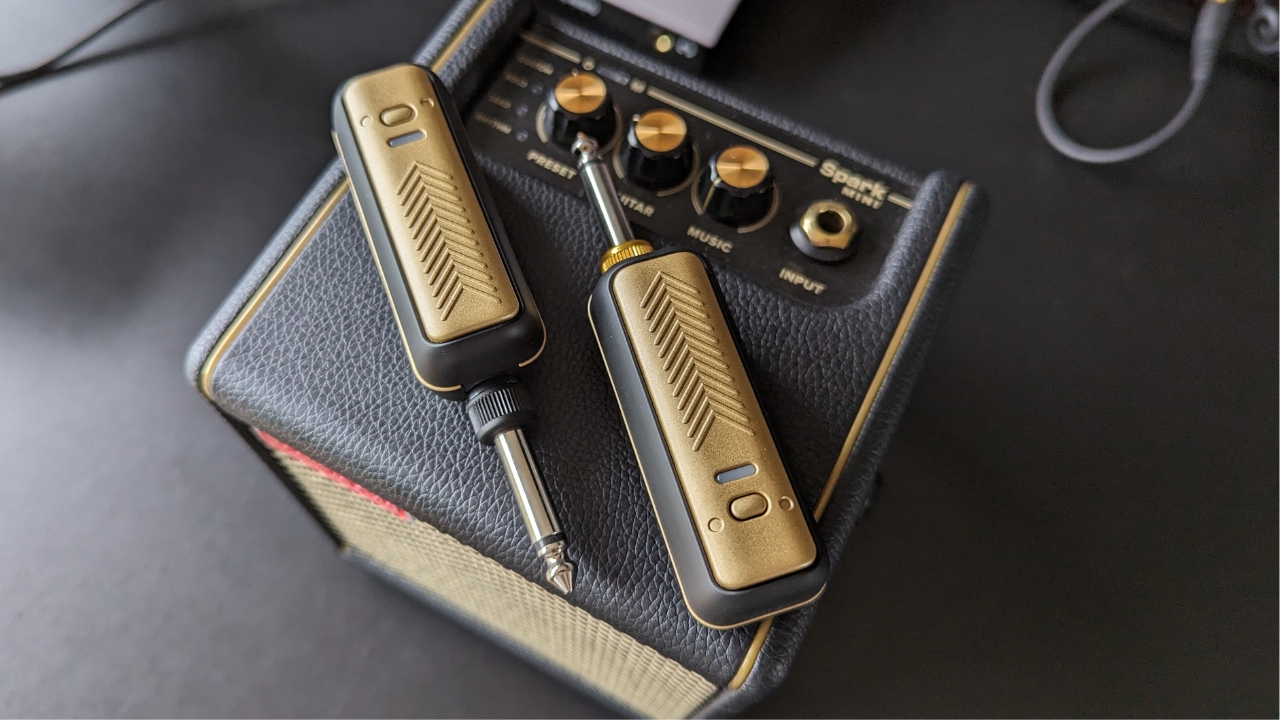MusicRadar Verdict
The Positive Grid Spark Link is the perfect first guitar wireless system. Low cost compared to others and easy to use, it’s ideal for the guitarist who has been weighing up whether or not they should go wireless both at home, in the rehearsal room, and on stage.
Pros
- +
Easy to set up
- +
Crystal clear audio
- +
Excellent range
- +
Durable build
Cons
- -
No pedalboard charger
MusicRadar's got your back
Range: 70 feet (21 meters)
Battery: Up to 6 hours
Audio Quality: 24-bit/48kHz
Frequency Range: 20Hz to 20kHz
Latency: Less than 3ms
Buy at: Positive Grid
Getting into the world of guitar wireless systems can be pretty daunting for the newcomer. Worries about frequencies, licensing issues, and the steep entry cost can all stand in the way of freeing yourself from the hold of your cables. The Positive Grid Spark Link aims to help you change those negative thoughts by being both easy to use, and cheap enough for most guitarists to afford.
For anyone who doesn't know Positive Grid - where have you been? - they're more commonly seen making desktop guitar amps that combine amp modelling tech with a smart companion app. The Spark Link is primarily designed to be paired with an existing PG amp, which is obvious from the looks, but there's also a wider use case.
Several different wireless systems such as those from Boss, Line 6, NUX, and XVive occupy the same space as the Spark Link, offering easy usability for the less tech-savvy amongst us whilst keeping the costs down from the more ‘pro’ units. So how does the Spark Link stack up against the more established names? Let's find out…
Positive Grid Spark Link review: Features
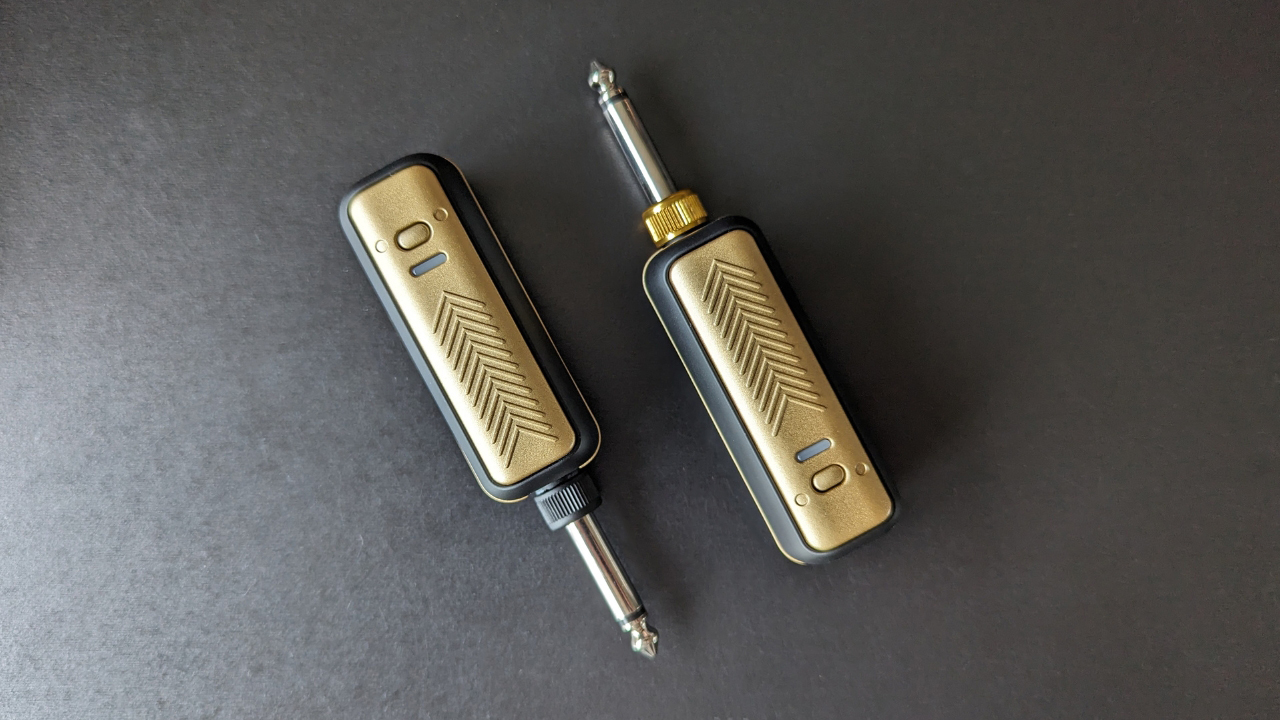
The Spark Link gives you a transmitter and receiver, both styled with PG’s signature black and gold colour scheme, which is nice for existing Spark amp users. They both have a hinged plug that will rotate 110°, giving you plenty of flexibility to fit into a socket of your choice.
The Link boasts excellent sound quality over the 2.4G wireless transmission band, giving you 24-bit/48kHz over a frequency range of 20Hz to 20kHz. So everything from the lowest sub to the highest sound of a cymbal or violin essentially. Of course, guitars don’t operate in this wide a frequency band, but it's reassuring to have.
It also promises under 3ms of latency, so you’re not likely to hear any delay between your playing and the resultant sound from your amplifier. The range offers over 20 meters or 70 feet so you can wander huge stages or just maraud around your house or flat. Helpfully, there are four different channels so you can use 4 Spark Links at once if you and your band want to go wireless at the same time.
Positive Grid Spark Link review: Performance
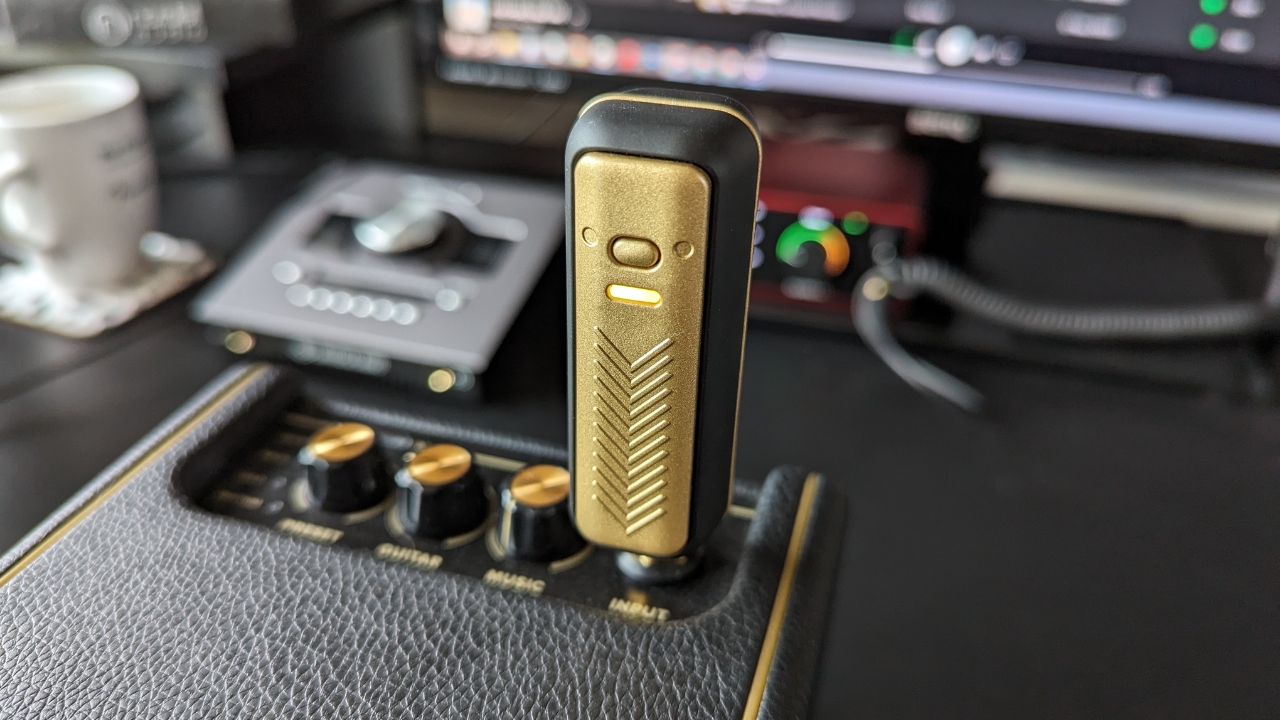
Upon opening the box I was initially stumped, as both transmitter and receiver are nearly identical. In fact, I sat there for a minute or so looking at both, wondering if there had been an issue and if I’d been sent two of the same unit. It took me a while to realise that the receiver has downward-facing arrows while the transmitter has the same design but faces outward, separating the two.
Want all the hottest music and gear news, reviews, deals, features and more, direct to your inbox? Sign up here.
Upon closer inspection, I noted a gold shroud on the input jack of the receiver and a black one on the transmitter and they’re also denoted by ‘TX’ and ‘RX’ on the back to divide the two further. They both feel solidly built, if a little plasticky, and the input hinge is nice and stiff so it’ll stay in place when you plug it in.
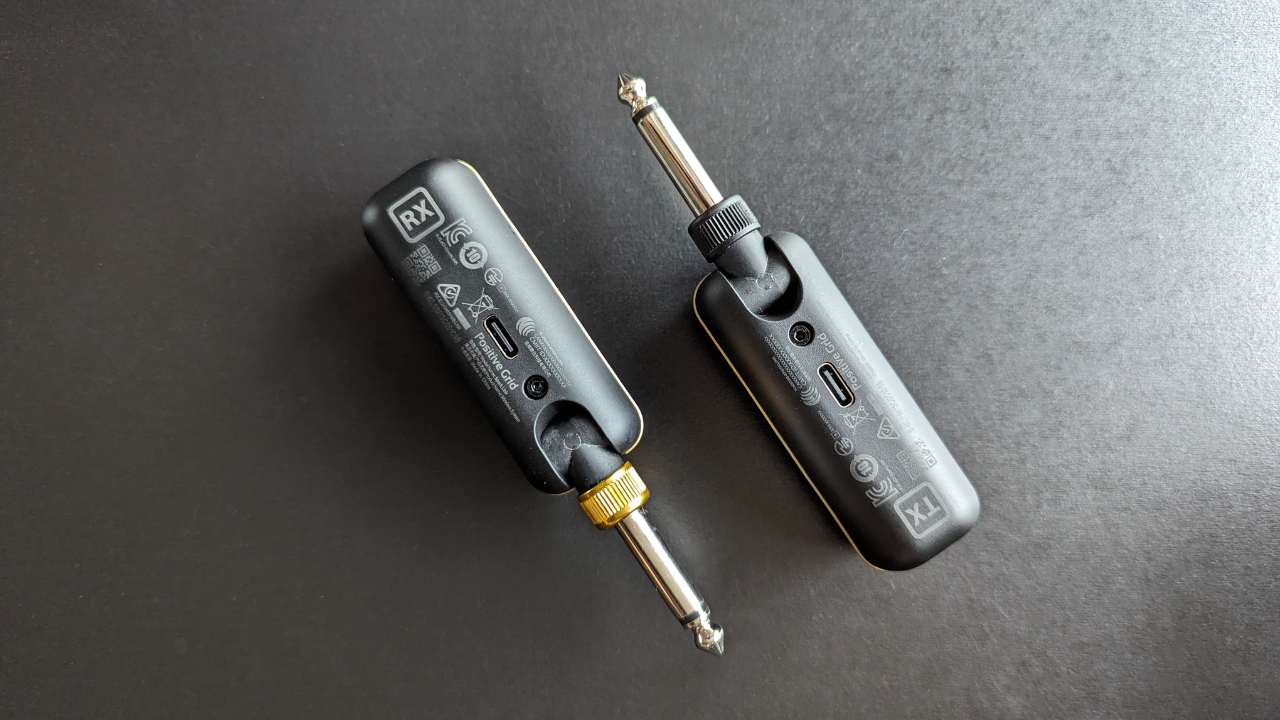
Pairing the two was an absolute breeze. I simply switched both on by holding in the gold button, they flashed blue for a few seconds to indicate they were connecting, and then both lights turned green and I was good to go. The LED light also changes colour to indicate the battery level, with green for 100-60%, yellow for 60-6%, and red for below 5%.
Plugging the receiver into my Spark Mini and transmitter into my Telecaster I was up and running immediately. To my ear, the sound was every bit as clear and crisp as a cable, and sat right next to the practice amp I couldn’t notice any latency. Of course, the first thing you do when you get a wireless unit is test the range. I walked all over my house playing, even venturing upstairs, and didn’t hear any noticeable loss of signal. I also tried near my router to see if there were any dreaded interference issues and detected nothing of concern. So far so good.
Sat back down at my desk I next tried a few different sockets on my guitars to see how they fit, facing no issues with a traditional Strat input, a super S-style guitar with the input on the side of the body, or an offset with the input on the body top. The receiver is super lightweight too, so you don’t really feel it when plugged in unlike some of the heavier units I’ve tested.

If you want to mute your signal then you can just quick press the gold button on your transmitter and it will instantly cut the signal. Another quick press has you back up and running and the light flashes to let you know it’s muted. Helpfully when long pressing to turn the transmitter off, the receiver loses the signal, flashes blue for a moment, then turns itself off, which is great for saving you battery power.
Unfortunately, it doesn’t work the other way around, so you’ll have to manually turn the receiver back on to get back up and running. It's not a deal breaker by any means, but it would be nice if PG could fix that in a firmware update. The battery can last up to 6 hours via a USB-C charging cable, and I played for a good three hours with the LED only changing to yellow and no further, so I’d be more than happy to use it in a live scenario.
Playing live is where we come to the only real downside I can see with Spark Link. Unlike the Line 6 or Boss units of similar ilk, there’s no charging facility you can integrate into a pedalboard. So unless you have a newer pedalboard power supply with a USB-C charging port, you might want to make sure you bring your phone charger for emergencies if you do plan on using it out on the road.
Positive Grid Spark Link review: Verdict
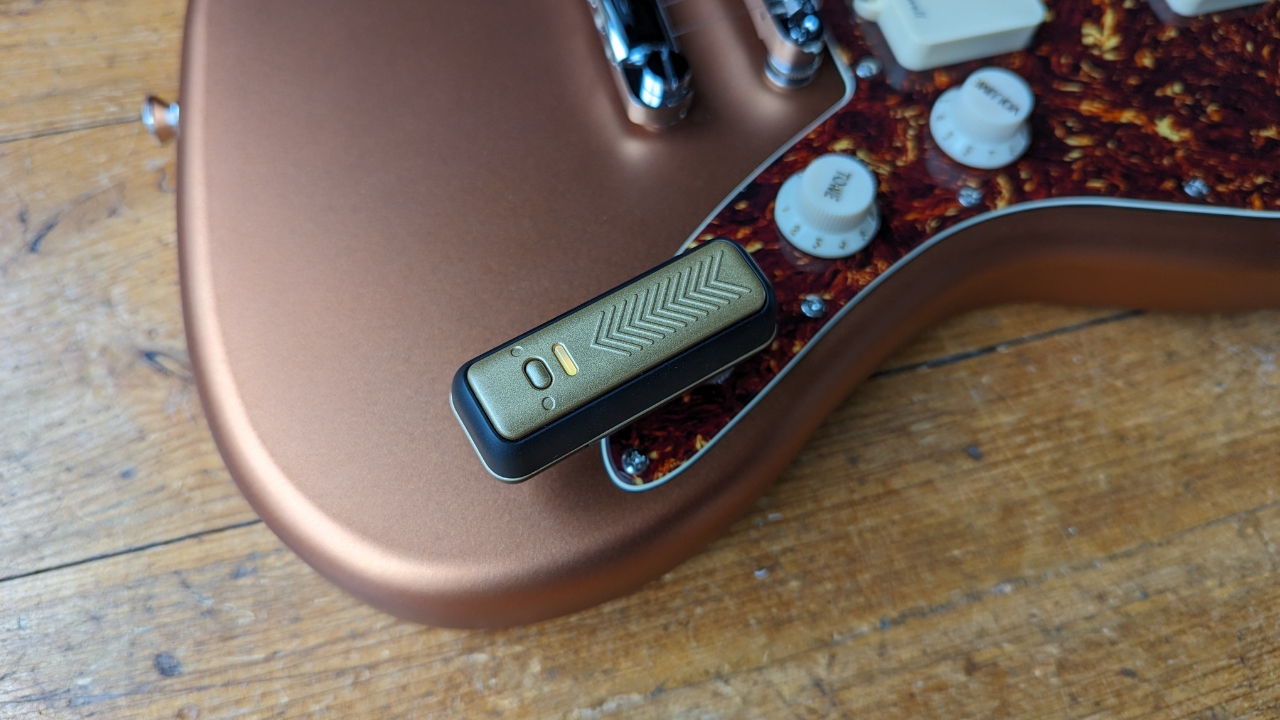
It’s a simple bit of kit, but the Positive Grid Spark Link does a fantastic job of making wireless systems accessible for every guitarist. It’s easy to set up, sounds great, and at the time of writing, it costs less than its competitors in the Boss WL 50 and Line 6 Relay G10S whilst offering equally good performance.
Aside from the lack of a dedicated pedalboard charging facility, I can think of little reason why this wouldn’t make the perfect first wireless guitar system for any guitarist. The Spark Link is available to preorder at the time of writing, but units won’t start shipping until late March according to the PG website.
Positive Grid Spark Link review: Specs
- Range: 70 feet (21 meters)
- Battery: Up to 6 hours
- Audio Quality: 24-bit/48kHz
- Frequency Range: 20Hz to 20kHz
- Latency: Less than 3ms
- Contact: Positive Grid

Matt is a Junior Deals Writer here at MusicRadar. He regularly tests and reviews music gear with a focus on audio interfaces, studio headphones, studio monitors, and pretty much anything else recording-related. Matt worked in music retail for 5 years at Dawsons Music and Northwest Guitars and has written for various music sites including Guitar World, Guitar Player, Guitar.com, Ultimate Guitar, and Thomann’s t.blog. A regularly gigging guitarist with over 20 years of experience playing live and producing bands, he's also an alumnus of Spirit Studios, where he studied studio engineering and music production.
